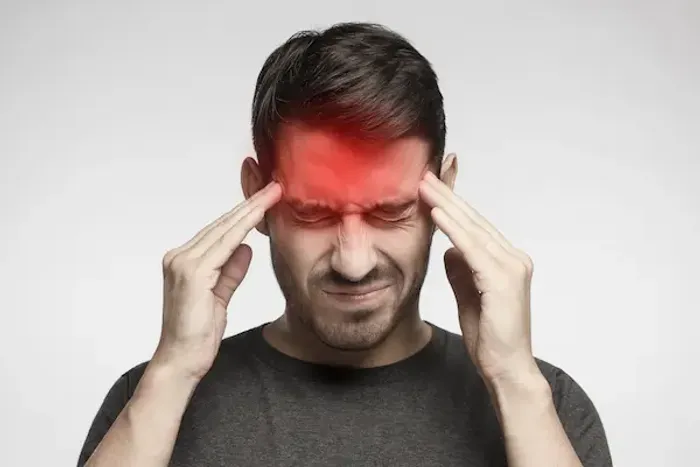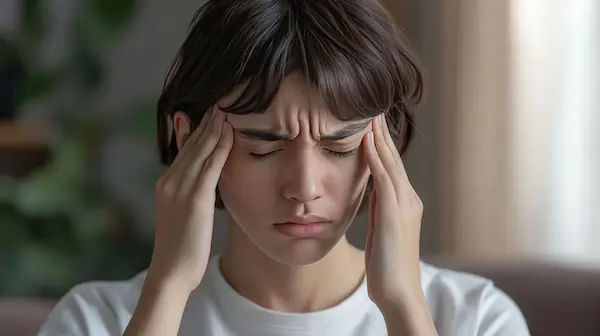Guide to Know Different Types Headache And Their Treatment
Tired of head pain? Learn about the different types of headaches (migraine, tension, cluster) and discover effective treatment options for fast, lasting relief. Understand your symptoms now!


Introduction
Headaches are among the most common health complaints, but not all headaches are the same. Understanding the different types of headache—and which treatments work best for each—can save you time, discomfort, and worry. This guide breaks down the most common types you’ll encounter, from tension-type headaches and migraine to cluster headache and medication-overuse headache. We’ll also explain how to tell a sinus headache from migraine, which red flags deserve urgent attention, and what your doctor looks for during diagnosis.
You’ll get practical steps for relief, prevention strategies you can start today, and a clear view of when to seek professional help. Whether you’re navigating occasional stress headaches or frequent migraine attacks, this handbook will help you make sense of your symptoms and build a plan that fits your life. If symptoms persist beyond two weeks or your headaches are changing in pattern or severity, consider consulting a doctor online with Apollo24|7 for further evaluation. Let’s explore the different types of headache—and the treatments that actually work.
What Do We Mean by “Different Types of Headache”?
Headaches fall into two big categories: primary and secondary. Primary headaches are disorders in their own right (tension-type headache, migraine, and cluster headache). Secondary headaches are caused by another condition, such as sinus infection, neck issues, dehydration, high blood pressure emergencies, or rarer but serious problems like bleeding in the brain.
Primary vs secondary in numbers: Tension-type headache is the most common primary headache globally, affecting up to about 42% of the population at some point, while migraine affects roughly 15% (more women than men). Cluster headache is rarer (around 0.1%) but intensely painful.
Why classification matters: Correctly identifying the type determines treatment. For example, a triptan can abort a migraine or cluster attack but won’t help much for a purely tension-type headache. Conversely, posture and neck care are central to managing many tension-type and cervicogenic headaches.
How Headaches Are Classified (ICHD-3)
- Doctors use ICHD-3 criteria to match your symptoms and timing to a diagnosis. Don’t worry—no need to memorize codes. Keep notes on:
- Location (one side or both), quality (throbbing vs pressure), intensity, duration, associated symptoms (nausea, light sensitivity, tearing, nasal congestion), and triggers (sleep loss, certain foods, stress).
- Frequency per month and how each episode responds to medication.
Unique insight: Many people have more than one headache type. A person can have both migraine and tension-type headache—and treating each “bucket” correctly is often the turning point.
Consult a Top General Physician
Headache Red Flags: When to Seek Urgent Care
Most headaches are not dangerous. Still, some features signal a possible emergency. Use the SNOOP10 mnemonic (summarized):
- S: Systemic signs (fever, weight loss), cancer, HIV
- N: Neurologic deficits (weakness, vision loss, confusion, seizures)
- O: Onset sudden (“thunderclap,” peak in seconds to a minute)
- O: Older age at onset (>50 years)
- P: Pattern change or Progressive/worsening; Positional; Post-traumatic; Papilledema; Pregnancy/postpartum;
Precipitated by exertion/sexual activity; Painful eye with autonomic signs.
Go to emergency care immediately for a thunderclap headache, new neurologic deficits, a severe headache after head injury, or a headache with stiff neck and fever. These may require urgent imaging or lumbar puncture. If your headaches are frequent, worsening, or persist beyond two weeks, consult a doctor online with Apollo24|7 or book a physical visit to ensure nothing serious is missed.
Unique insight: A “new worst headache” does not always mean a bleed—but it always deserves emergency evaluation. Early care is about ruling out danger quickly.
Tension-Type Headache (TTH)
Symptoms and Triggers
TTH typically feels like a steady, band-like pressure on both sides of the head, often with tight neck or scalp muscles.
It’s usually mild to moderate, not throbbing, and not worsened much by routine physical activity. Nausea and vomiting
are uncommon; light or sound sensitivity may be mild if present. Triggers include stress, sleep disruption, jaw clenching, poor posture, and prolonged screen time (digital eye strain).
Treatment and Prevention
- Acute relief: Over-the-counter (OTC) analgesics such as acetaminophen or NSAIDs (ibuprofen, naproxen) can be effective when used appropriately [6]. Avoid exceeding recommended doses.
- Non-drug approaches: Heat or cold packs to neck/occiput, gentle stretching, progressive muscle relaxation,
biofeedback, and short walks can reduce muscle tension. For frequent TTH, consider physical therapy focusing on neck
and shoulder stabilization and posture training. - Lifestyle prevention: Consistent sleep, hydration, scheduled breaks for screens, and ergonomics matter. A weekly “movement audit” (set timers for micro-breaks, 20-8-2 sitting-stand-walk rule) can significantly reduce frequency.
- Supplements and comorbidities: If headaches tend to worsen with low mood or anxiety, cognitive behavioral therapy (CBT) can help; screening for sleep apnea or bruxism (nighttime jaw grinding) is worthwhile.
Migraine (With and Without Aura)
Migraine is more than a severe headache—it’s a brain sensory processing disorder. Attacks often feature one-sided throbbing pain, light/sound sensitivity, nausea, and worsened pain with activity, lasting 4–72 hours [4]. About a third experience aura (visual zigzags, blind spots, tingling) before pain. Migraine affects ~15% of people globally and is a leading cause of disability under age 50.
Common Subtypes
- Migraine without aura: Most common.
- Migraine with aura: Visual or sensory symptoms lasting 5–60 minutes preceding pain.
- Menstrual migraine: Attacks around menses due to estrogen drop.
- Vestibular migraine: Dizziness/vertigo is prominent.
- Chronic migraine: 15+ headache days/month with ≥8 migraines.
Acute Treatments
- - First-line: Triptans (e.g., sumatriptan) at onset can abort attacks. For those who cannot take triptans or don’t respond,
newer gepants (ubrogepant, rimegepant) and ditans (lasmiditan) are options. - - Add-ons: Anti-nausea medicines (metoclopramide), NSAIDs, or acetaminophen combinations. For menstrual attacks,
pre-emptive NSAIDs or triptans during the “high-risk window” can help. - - Avoid MOH: Limit acute meds to ≤2–3 days per week.
Prevention
- Medications: Beta-blockers (propranolol), topiramate, amitriptyline, and CGRP monoclonal antibodies (erenumab,
fremanezumab, galcanezumab, eptinezumab) reduce frequency. Some gepants (atogepant, rimegepant) can be
preventive. - Lifestyle: Regular sleep, meals, hydration, aerobic exercise, and trigger management. Magnesium citrate (e.g., 400 mg/day), riboflavin (B2, 400 mg/day), and CoQ10 have supportive evidence.
- Menstrual migraine: Short-term “mini-prevention” with naproxen or triptans around menses; discuss hormonal
strategies with your clinician.
If your migraine pattern changes, you develop aura for the first time, or attacks become frequent, consult a doctor
online with Apollo24|7. For select labs (vitamin D, thyroid, HbA1c) that may influence overall health, Apollo24|7
offers a convenient home collection.
Cluster Headache and Other Trigeminal Autonomic Cephalalgias (TACs)
Cluster headache produces excruciating, strictly one-sided pain (often around the eye/temple), with tearing, red eye,
nasal congestion or runny nose on the same side, eyelid droop, and restlessness. Attacks last 15–180 minutes and occur
in “clusters” (weeks to months), often at the same time of day/night. Though uncommon (~0.1% prevalence), it’s one
of the most severe pains known.
Acute Treatments
- High-flow oxygen (100% O2 at 12–15 L/min via non-rebreather mask for ~15–20 minutes) is highly effective and safe.
- Subcutaneous or nasal triptans (sumatriptan or zolmitriptan) can abort attacks.
- Intranasal lidocaine is a potential adjunct.
Prevention
- First-line: Verapamil with ECG monitoring; dose titrated by a clinician.
- Short-term transitional therapy: A short course of corticosteroids (e.g., prednisone) at cluster onset may bridge while
verapamil takes effect. - Other options: Lithium in chronic cluster, occipital nerve block, or neuromodulation in refractory cases.
Avoid alcohol during active cluster periods—it often triggers attacks. If you suspect cluster headache, see a specialist
promptly; early diagnosis speeds access to oxygen therapy and targeted care. Apollo24|7 can help you connect with a
neurologist or headache specialist.
Secondary Headaches You Can Address
Sinus “Headache” vs Migraine
Most “sinus headaches” without fever or thick colored nasal discharge are actually migraine [9]. Both can cause facial
pressure and nasal symptoms due to shared nerve pathways. Clues to sinusitis include preceding cold, fever, and
purulent discharge; migraine more often has light/sound sensitivity and nausea. If your “sinus” headaches last 4–72 hours, worsen with activity, and improve with migraine medications, they’re likely migraine.
Cervicogenic and TMJ-Related Headache
Neck joints or muscles can refer pain to the head. Typically one-sided and aggravated by neck movement or sustained postures. TMJ-related pain links to jaw clenching, clicking, or morning stiffness. Management includes physical therapy, posture optimization, ergonomic changes, jaw relaxation techniques, mouthguards if bruxism is present, and targeted analgesics. Imaging is rarely needed unless red flags are present.
Eye Strain, Dehydration, Sleep Apnea
- Eye strain: Uncorrected vision issues or digital eye strain can cause periocular or forehead pain; follow the 20-20-20 rule and get an eye exam.
- Dehydration: Common, especially in heat or with endurance exercise—pair coffee/tea with water.
- Sleep apnea: Morning headaches, snoring, daytime sleepiness—evaluation can be life-changing; treating apnea often
reduces headaches.
If congestion, fever, or face pain persist beyond 10 days or worsen, or if headaches evolve, consult a doctor with Apollo24|7. For related labs like HbA1c (sleep apnea risk) or vitamin D, home collection is available.
Long-tail keywords used: sinus headache vs migraine difference; tmj headache jaw pain.
Unique insight: If a “sinus” attack improves rapidly with a triptan, that’s a strong clue it’s migraine—not sinusitis.
Medication-Overuse Headache (MOH)
Using acute headache medicines too often can backfire, leading to more frequent headaches. MOH is common in people with migraine or TTH who regularly take OTC analgesics, combination analgesics (especially those with caffeine), triptans, or opioids [10]. Typical thresholds: using simple analgesics on ≥15 days/month, or triptans/opioids/combination analgesics on ≥10 days/month for 3 months.
Breaking the Cycle
- Awareness: Keep a medication log. If you’re using acute meds more than 2–3 days a week, discuss a preventive plan.
- Withdrawal: Under medical guidance, either abrupt stop (for triptans, simple analgesics) or tapered withdrawal (for
opioids, barbiturates). Short-term “bridge” therapies (e.g., naproxen, steroids, antiemetics) may soften the rebound. - Preventive meds: Starting preventive therapy concurrently reduces relapse risk.
- Support: Behavioural strategies, sleep regulation, hydration, and magnesium can help while resetting.
If you suspect MOH, consult a doctor online with Apollo24|7 to create a safe taper and prevention plan.
How Doctors Diagnose Headaches?
History and Exam
- Diagnosis is primarily clinical. Your clinician will ask about:
- Onset, frequency, duration, quality, location, associated symptoms, triggers, menstrual timing, and response to meds.
- Impact on life (days missed, disability).
- Neuro exam assesses strength, sensation, reflexes, eye movements, and optic discs.
When Tests Are Needed
- Imaging (CT/MRI) is not routinely required for typical migraine or TTH with a normal exam. It’s considered if red flags are present, headache worsens progressively, exam is abnormal, onset is after age 50, or there’s a new pattern in those with cancer/immunosuppression [5, 11]. Labs may be ordered if a secondary cause is suspected (e.g., ESR/CRP for suspected temporal arteritis in those >50 with scalp tenderness/jaw claudication). Apollo24|7 offers home collection for common labs (thyroid, HbA1c, vitamin D) that help optimize overall health, which can influence headache control.
Headache Diary and Digital Tools
- Track attack timing, triggers, medications, and 2-hour outcomes. This helps fine-tune both acute and preventive strategies. Many people discover patterns—like weekend sleep-ins, skipped meals, or dehydration—that are modifiable.
Your Treatment Roadmap
Acute Relief: OTC vs Prescription
- OTC: Acetaminophen, ibuprofen, naproxen can work for mild to moderate attacks. Combining an NSAID with an antiemetic in migraine can improve relief.
- Prescription: Triptans remain first-line for many migraines; gepants/ditans for those with cardiovascular
contraindications or triptan non-responders. For clusters, oxygen and injectable/nasal triptans are key. - Practical tips: Treat early, at onset. Consider faster routes (nasal, injectable) if nausea or rapid escalation. Limit to ≤2–3 days/week to avoid MOH.
Prevention: Medicines, Supplements, Lifestyle
- Medicines: Migraine options include beta-blockers, topiramate, amitriptyline, CGRP monoclonals, and oral CGRP antagonists. TTH may respond to amitriptyline. Cluster prevention often uses verapamil.
- Supplements: Magnesium, riboflavin (B2), and CoQ10 have evidence for migraine prevention .
- Lifestyle: Regular sleep, exercise, hydration; limit alcohol; steady caffeine intake (avoid “caffeine rollercoaster”).
- Devices: Neuromodulation (e.g., external trigeminal or vagal nerve stimulators) may help select patients.
Building a Personalized Plan and When to Consult
- Identify your primary type(s), choose a fast-acting acute option, and layer prevention if ≥4 monthly migraine days or frequent TTH.
- Use a diary to iterate monthly. If your condition does not improve after trying these methods, book a physical visit to a
doctor with Apollo24|7 to tailor therapy and rule out secondary causes.
Conclusion
Headaches are common—but the right diagnosis transforms care. Once you recognize the different types of headache, you can match treatment to the pattern: tension-type headaches often respond to ergonomics, stretching, and simple analgesics; migraine benefits from targeted acute medicines (triptans, gepants) and modern preventives (including CGRP therapies); cluster headache demands quick access to oxygen and specific prescription options. Many secondary headaches are modifiable—improving sleep, hydration, posture, and jaw and neck mechanics can reduce frequency and intensity. Watch for red flags and don’t hesitate to seek urgent care when they appear.
If your headaches are frequent, changing, or not responding to your current plan, consult a doctor online with Apollo24|7 for tailored guidance. A short virtual visit can help you confirm your type, adjust treatments, and decide whether tests are necessary. For supportive labs like thyroid function, vitamin D, or HbA1c that may influence your overall health, Apollo24|7 offers a convenient home collection. With a simple diary, early treatment, and gradual lifestyle improvements, most people see meaningful relief within weeks. You don’t have to manage this alone—help is available, and better days are ahead.
Consult a Top General Physician
Consult a Top General Physician

Dr Vinay Kumar A V
Nephrologist
8 Years • MBBS, MD - General Medicine, DM - Nephrology
Bilaspur
Apollo Hospitals Seepat Road, Bilaspur
Dr. Indrajit Das
General Physician/ Internal Medicine Specialist
4 Years • "MD (Internal medicine) : Gauhati Medical College and Hospital, Guwahati (2018-2021) MD (Pathology) : Gauhati Medical College and Hospital, Guwahati (2012-2015) MBBS (Bachelor of Medicine, Bachelor of Surgery) : Silchar Medical College, Assam (2003-2008) "
Guwahati
Apollo Excelcare Hospital, Guwahati

Dr. Tanmaya Kumar Sahu
General Physician/ Internal Medicine Specialist
12 Years • MBBS, MD ( Internal Medicine )
Bhubaneswar
Apollo Hospitals Old Sainik School Road, Bhubaneswar

Dr. Hariprasath J
General Physician/ Internal Medicine Specialist
19 Years • MD (Gen Med), FCCP, Dip (Diabetology, UK)
Chennai
Apollo First Med Hospitals P H Road, Chennai
(200+ Patients)

Dr. Abhishek Ranjan
General Practitioner
4 Years • MBBS
Kolkata
VDC Clinic, Kolkata
Consult a Top General Physician

Dr Vinay Kumar A V
Nephrologist
8 Years • MBBS, MD - General Medicine, DM - Nephrology
Bilaspur
Apollo Hospitals Seepat Road, Bilaspur
Dr. Indrajit Das
General Physician/ Internal Medicine Specialist
4 Years • "MD (Internal medicine) : Gauhati Medical College and Hospital, Guwahati (2018-2021) MD (Pathology) : Gauhati Medical College and Hospital, Guwahati (2012-2015) MBBS (Bachelor of Medicine, Bachelor of Surgery) : Silchar Medical College, Assam (2003-2008) "
Guwahati
Apollo Excelcare Hospital, Guwahati

Dr. Tanmaya Kumar Sahu
General Physician/ Internal Medicine Specialist
12 Years • MBBS, MD ( Internal Medicine )
Bhubaneswar
Apollo Hospitals Old Sainik School Road, Bhubaneswar

Dr. Hariprasath J
General Physician/ Internal Medicine Specialist
19 Years • MD (Gen Med), FCCP, Dip (Diabetology, UK)
Chennai
Apollo First Med Hospitals P H Road, Chennai
(200+ Patients)

Dr. Abhishek Ranjan
General Practitioner
4 Years • MBBS
Kolkata
VDC Clinic, Kolkata
More articles from Headache
Frequently Asked Questions
1) How can I tell a sinus headache from a migraine?
If you have facial pressure with light/sound sensitivity and nausea, and it lasts 4–72 hours or improves with a triptan, it’s likely migraine rather than sinusitis. True sinus headache often includes fever and thick nasal discharge. If unsure, seek evaluation; sinus headache vs migraine difference matters for treatment.
2) What is a thunderclap headache and what should I do?
A thunderclap headache peaks within seconds to a minute and can signal bleeding or other emergencies. Go to the ER immediately. This is a headache red flag when to worry.
3) How often can I take OTC painkillers for headaches?
Try to limit acute medications to ≤2–3 days per week to avoid medication overuse headache. If you need more frequent relief, discuss preventive options with a clinician.
4) Are menstrual migraines treatable?
Yes. Options include pre-emptive NSAIDs or triptans during the high-risk window and, in some cases, hormonal strategies. For personalized care, consult a doctor online with Apollo24|7.
5) Can neck posture cause headaches?
Poor posture and neck muscle strain can trigger or worsen tension-type and cervicogenic headaches. Ergonomic adjustments, stretching, and physical therapy often help.
.webp)


.webp)
